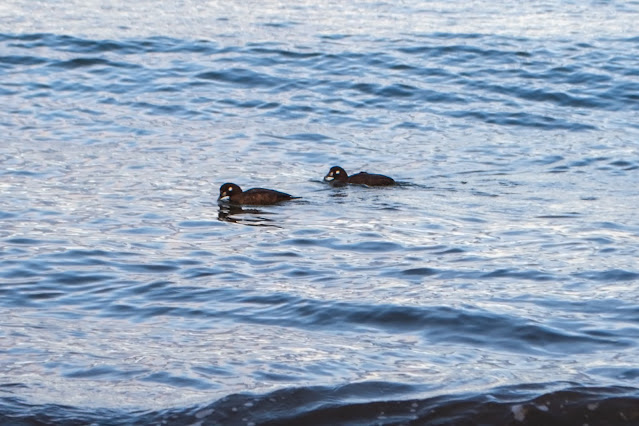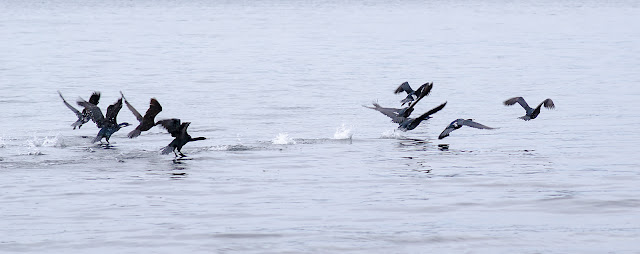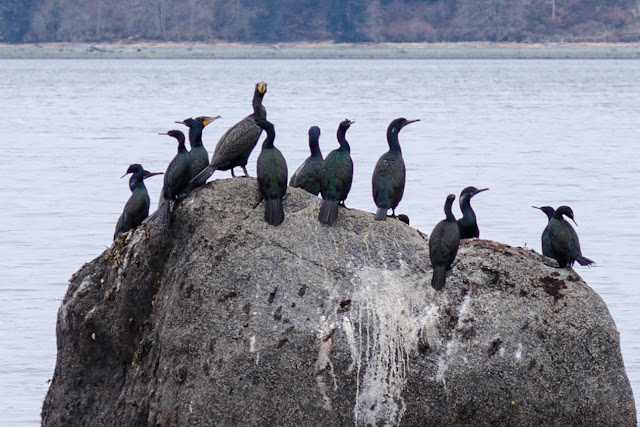Half of the birds in my local guide book (Birds of Coastal British Columbia) are aquatics. But they've separated them into groups: Diving birds, Seabirds (most of these dive), Gulls and kin, Waterfowl (some of which are divers), Wading birds, Shorebirds (who are usually wading). A bit confusing.
These water-loving birds were on or in or over the water around Tyee Spit last week.
 |
| Standing on water. Male mallard showing off his speculum, which is usually blue, here faded to pink. |
 |
| Grebes, probably Horned grebes, Podiceps auritus, in their winter plumage. These are classified as "Diving Ducks". One of the smallest waterbirds. |
 |
| A gull and his shadow. |
 |
| Harlequin ducks, male and female. These are surfers, and also dive. |
 |
| A distant gull with what looks like a fresh salmon head. |
 |
| Not in my guide book. Little metal water-loving fliers. De Havilland Otters. |
And there are more mallards ...
~~~~~~~~~~~~
La mitad de los pájaros en mi libro guía, son acuáticos; es decir, pasan la vida en o encima del agua. Pero el libro guía los separa entre: Buceadores, Aves Marítimas (la mayoría de los cuales son buceadores), Gaviotas y parecidos, Aves Acuáticas (algunas son buceadores), Aves Zancudas (que buscan su comida en el agua al borde del mar), Aves Costeñas (limícolas, que casi siempre se encuentran buscando su comida en el agua). Un poco enredado.
Estos pájaros amantes del agua se encontraron alrededor de la lengua de tierra Tyee Spit la semana pasada.
- Un pato real macho, parado y extendiendo las alas para mostrar su espéculo, que generalmente es azul fuerte, pero en este caso es color de rosa.
- Zampullines cuellirrojos, Podiceps auritus, en su plumaje de invierno. Estos son buceadores, y unos de los pájaros acuáticos más pequeños.
- Una gaviota con su sombra en el agua.
- Patos arlequines, macho y hembra. Les gusta el agua agitada y también son buceadores.
- Una gaviota en la distancia, con lo que parece ser la cabeza de un salmón.
- Estos no están en mi libro guía. Pajaritos acuáticos metálicos. De Havilland Otters.














